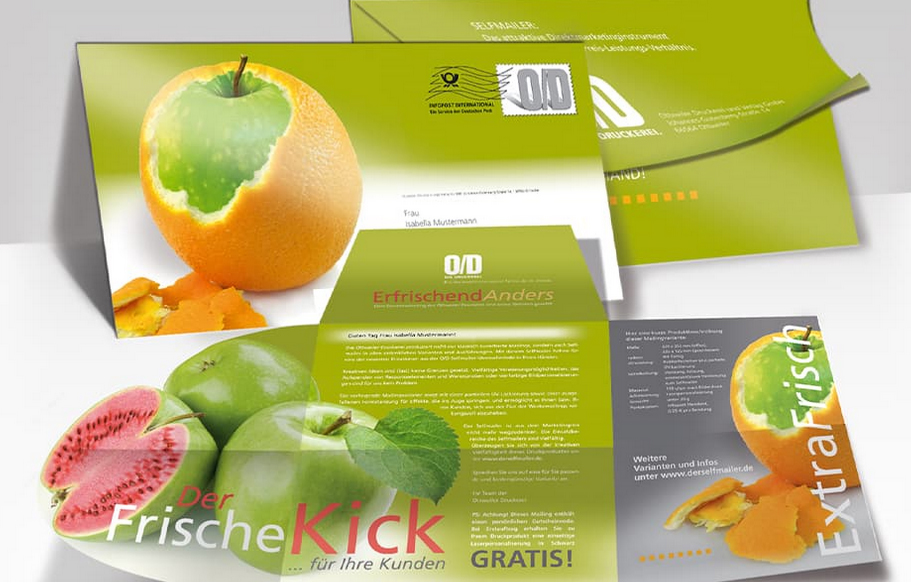
Printed advertising letters and flyers are increasingly being found in mailboxes. Print mailings have recently seen a slight increase again.
What are the advantages of integrating a print mailing into a direct marketing campaign? What is meant by a web-to-print solution? Why does a printed sales letter often generate a higher conversion rate than an e-mail? Answers to these questions can be found in an online portal. In this way, Deutsche Post would like to provide advertising companies and agencies with support in dialog marketing. Certainly, the logistics and shipping service provider also wants to push its own business. The reason for the new website is the fact that print mailings meet with a high response.
Coveted dialog marketing variant
In recent years in particular, advertising expenditure has been shifted to a large extent towards online advertising, e-mailing and social media, even beyond Germany. At times, it seemed as if social networks, messenger services and e-mail advertising could completely displace traditional letter mail. As evidenced by the 2020 Dialogue Mail Study published by the Collaborative Marketing Club, print mailing continues to hold its own as one of the most popular forms of dialogue marketing.
Nearly 19 percent of all advertising spending went to “print mailings” in 2019, according to the CMC study. A significant role in the success of the tried-and-tested classic advertising letters is clearly played by the “digital overload” of consumers. According to Deutsche Post, around 23 million advertising letters are sent every day in Germany alone. Obviously, in times of overflowing e-mail inboxes, the personally addressed paper mailing enjoys high credibility and appreciation among consumers. A well-done mailing often impresses the recipient with its look and feel, successful finishing or the surprising moment of a special smell.
Economical print mailings
In the last two years, the European Federation of Envelope Manufacturers FEPE examined the performance of print mailings in the currently booming online trade in various studies. According to this study, Deutsche Post/DHL determined that 78 percent of existing customers are reached by mail – in compliance with data protection regulations and without the need for additional “double opt-in” (explicit consent from consumers for the inclusion of advertising contacts). With e-mails, on the other hand, the figure is only 9 percent.
The average conversion rate (CVR) of print mailings sent, as determined in the CMC study, is relevant. For the web stores studied, the CVR was an astonishing 4.9 percent. Consequently, 4.9 percent of the advertising mailings led to an order. This value is not even approached by any other medium.
Other benefits of print mailings include larger customer shopping baskets (+8 percent) and higher customer loyalty. Every euro spent on a print mailing results in 9.90 euros in additional sales (return on advertising spend). Even if the production costs of a print mailing are higher than for an e-mail campaign, printed mailings are considered a very profitable solution due to larger shopping baskets on average and higher response rates.
Print mailing plus online advertising
Nevertheless, new, digital forms of advertising have now gained a firm foothold in dialog marketing. Dynamic data-based individualization in particular is now easier to implement in the digital environment. Meanwhile, automatic systems create open interfaces to analog advertising by means of digital databases. Accordingly, an e-mail advertisement can first be triggered in campaign management.
If this e-mail is not opened within a predefined period, an additional print mailing is automatically sent in order to take advantage of the better response rate and conversion rate of this medium. Print mailings can also be launched from the digital environment, thus bypassing the “double opt-in” requirement for consumers.
Your
Frank Baier,
Editor-in-Chief “Bindereport”
This text is reproduced with kind permission of Müller Martini, you can read the original article first published here
